Post by markweth on Aug 26, 2015 10:57:33 GMT -8
First, please forgive me for cross-posting this trip report here, but honestly I've always found the "Trip Reports and Storytelling" sub-forum to be a bit redundant and without much activity. . . seems like posting trip reports in the Trailhead Register keeps things lively and just makes more sense.
Torrey Lake, Pioneer Mountains
Mono Creek Campground, Backpacking to Torrey Lake
Beaverhead-Deerlodge National Forest
July 17-20, 2015
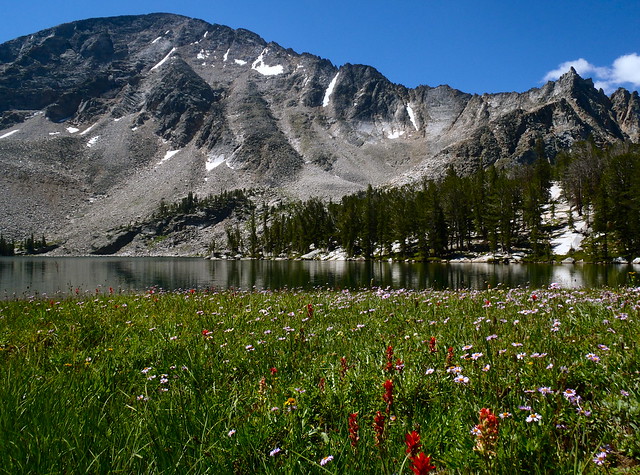
Experiencing a new landscape with an old friend always makes for a memorable backpacking trip. For this particular trip, the new landscape was the East Pioneer Mountains of Montana and the old friend was Justin, who I’ve known since we bussed tables in Louisville, Kentucky together over a decade ago. This would be Justin’s first trip to Montana and my first trip to the Pioneers. It would also be our first time backpacking together since a trip in Great Smoky Mountains National Park taken shortly before I moved to Montana. I spent a fair amount of time planning this trip and I’d like to think the trip returned results equal to, if not greater than, the effort put into its planning.
By some minor miracle, we found ourselves on the road before 8 a.m. Friday morning. After a few hours of scenic driving we were picking a campsite — all five were vacant when we arrived — at the cozy Mono Creek Campground. While we rarely camp at car campgrounds, I thought it would be prudent for Justin to spend a night at 7,000 feet to help him acclimate before we made the 9-mile hike in to Torrey Lake (just shy of 9,000 feet), which would be our basecamp for the next two nights. Additionally, staying at the campground would let us get an early start the next morning, give us the afternoon to explore the nearby ghost town of Coolidge, and more easily prepare and consume a delicious dinner. Although we’ve pulled off some great, dare I say “gourmet”, meals in the backcountry before I always appreciate the sparse amenities provided at campgrounds.
Shortly after noon, we were back in the car and making the short drive to Coolidge. Exploring the dilapidated structures of the ghost town, which required a short hike, was a great way to stretch our legs and get some mountain air in our lungs. It was also a good place to exercise our imaginations, as we pondered what life must have been like in Coolidge during the boom years. We returned to the campground in the middle of a supremely fine mid-summer afternoon and recovered from our less-than-strenuous adventure by laying in our hammocks for a bit and drinking an excellent locally brewed nut brown ale. As we lounged the afternoon away the campground began to fill up and by early evening all the sites were occupied.
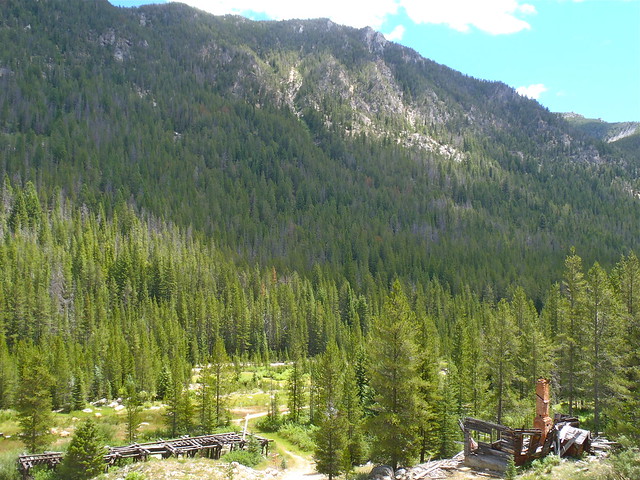
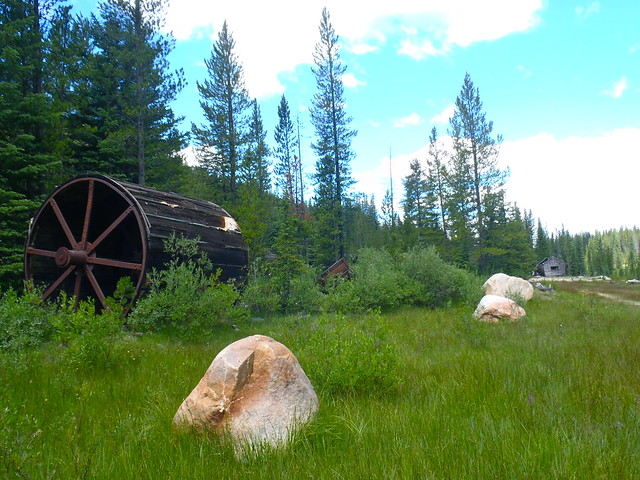
Although we hadn’t really worked up an appetite from laying around in our hammocks, we started snacking on some sharp white cheddar cheese and chips and hummus. We also switched from nut brown ale to a delicious micro-brewed organic stout. Once the light began its transition into the extended dusk of summer in the Northern Rockies I set about lighting the coals on which we would cook our dinner. I’d made the decision, which at the time I thought was brilliant, to stop at a crossroads town during the drive and pick up some charcoal, figuring it would be easier to just use that than gather firewood. The time I would spend gathering firewood could be better spent laying in the hammock and drinking beer.
This was a sound idea in theory, but I’d forgotten to read the fine print (or any print at all, actually) on the charcoal bag which mentioned lighting fluid being necessary. In a stroke of genius, which I must insist Justin take complete and well-deserved credit for, it was suggested that perhaps using the bug spray and a lighter to “stimulate” the pyramid of charcoal might be viable as an alternative catalyst. Despite such bulletproof scientific reasoning and my diligent efforts, which I somehow managed with beard and eyebrows intact although my pride suffered, this proved to be ineffective. Maybe Justin just wanted to see me play with fire. Regardless, we found ourselves gathering firewood and building a campfire, which eventually caught the coals on fire and cooked our delayed dinner.
Sitting fireside we decided to enjoy a few sips of one of Kentucky’s finest exports while twilight descended on Big Sky Country. The warming sips of a single-barrel bourbon perfectly complemented the ambience of the evening and served as an excellent aperitif as our foil-wrapped feast cooked over the coals. If were going to be car camping, we might as well eat like kings.
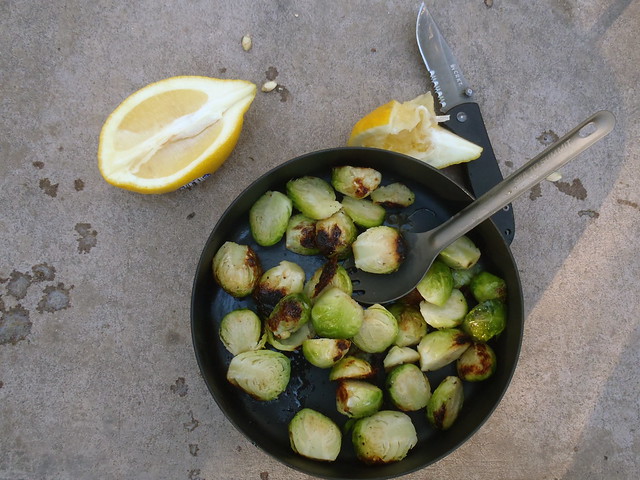
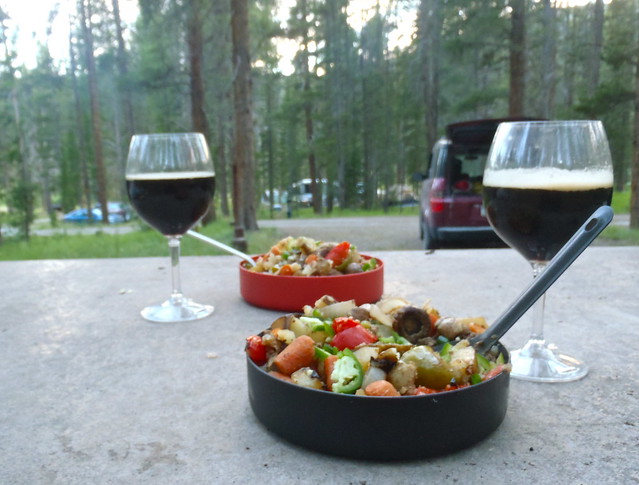
Roasted Brussels sprouts with lemon juice, served with a goat cheese, mayonnaise and spice aioli, would be our appetizer. The main course was beef (marinated in soy sauce, Worcestshire sauce, and bourbon) with potatoes, mushrooms, carrots, onions, green and red peppers, with sliced jalapeno. Not bad grub at all. Needless to say the meal disappeared in a fraction of the time it had taken to prepare it and we spent an hour or so around the campfire letting the digestion process take place before turning in to our respective tents.
We awoke a few minutes before 6 a.m. to a distinct chill in the air, packed quickly, and then enjoyed coffee and breakfast quesadillas before loading up our packs, loading up the car, and making the 500-foot drive to the trailhead. I’m always a bit surprised, but never exactly disappointed, when I arrive at a trailhead on a gorgeous Saturday morning in the summer and find the parking lot empty. Such was the case as we stretched and then shouldered our packs and headed up the trail.
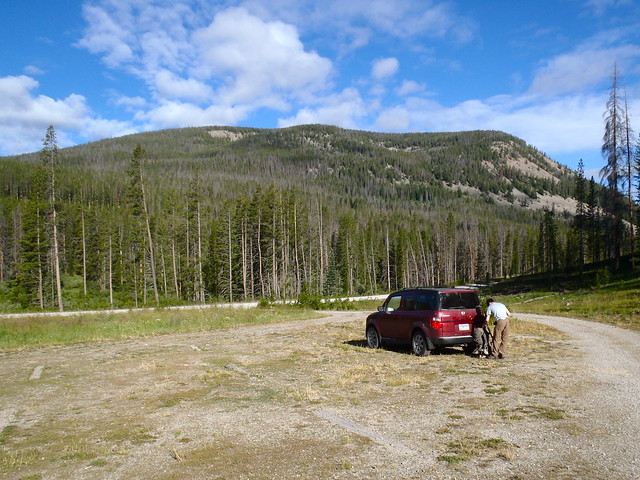
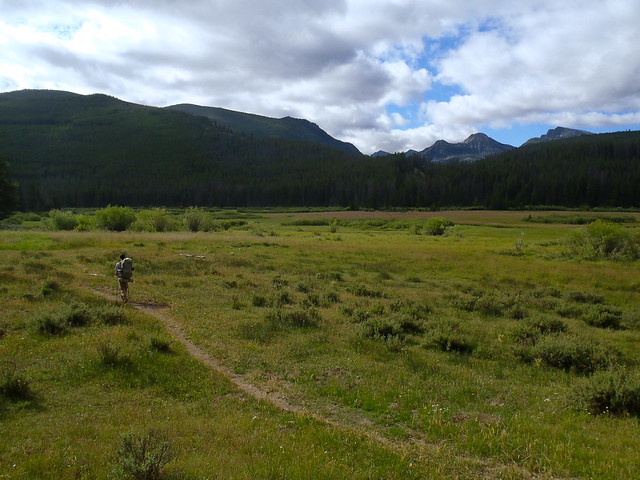
As far as trails go, this one was near-perfect as an introduction to backpacking in Montana. The first three miles or so passed between lodgepole pine stands and picturesque meadows dotted with sagebrush and cut through by a clear, placid, serpentine stream. It would’ve made a great background for a Charlie Russell painting. Clouds drifted overhead and a light breeze stirred up the scents of the flora and delivered them to our noses. We took a break at the first and only junction on our journey to Torrey Lake; from here it would be about six miles or so to the subalpine lake where we would spend the next two nights. The first four of the six miles were nearly level hiking through evergreen forest paralleling a quintessential mountain stream. A few clearings here and there provided views upward to the rugged ridgecrest that culminated in the peaks of Torrey Mountain (11,147 feet) and Tweedy Mountain (11,154 feet). We took another break after crossing the stream on a sturdy bridge. Our break conveniently coincided with a half-hour rain shower, which we waited out under the shelter of a spruce tree with particularly full boughs.
The next leg of the hike after the bridge was a bit more undulating but never felt steep. It was only after crossing the stream again and beginning the final two-mile section to the lake that the rise over run began to require unrestrained effort. Interestingly, it was at this exact moment that the rain returned and transitioned from a relatively unremarkable shower to a certified downpour. So, fully suited up in our raingear, we made the final push to the lake. It was, in no uncertain terms, a slog. A grind. But gorgeous wildflower displays and our innate anticipation kept the mood light even though our packs were heavy.
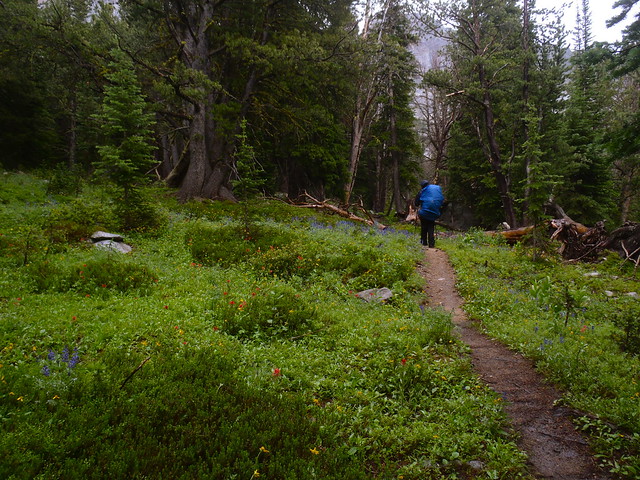
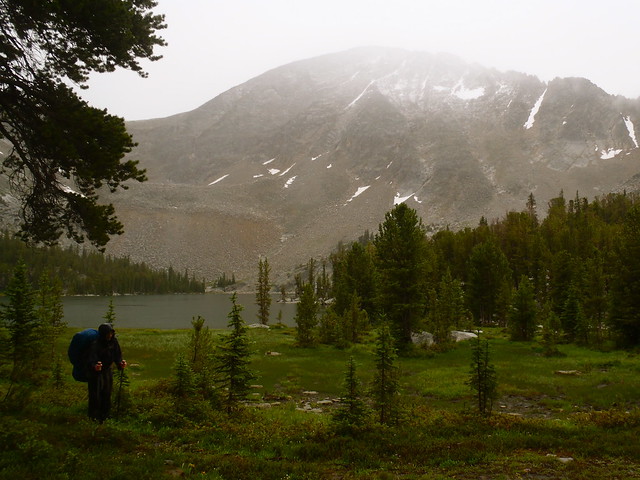
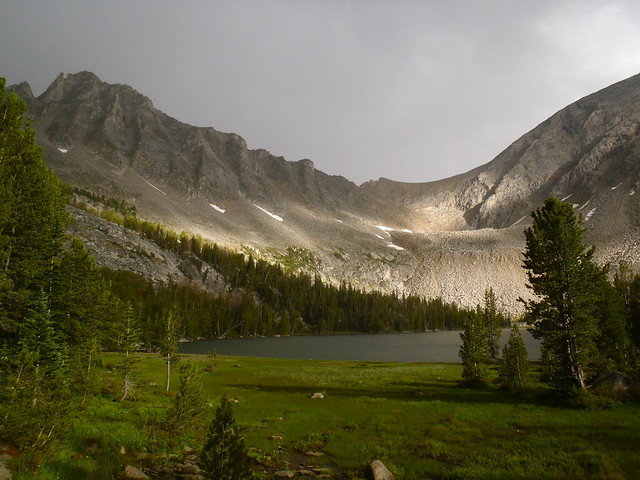
The scene that greeted us when we broke out of the trees and reached the meadow at the mouth of the lake left me awestruck. It was simply amazing. Granite cliffs and peaks which nearly met the lakeshore soared 2,000 feet above the rainsplashed water; the meadow was filled with wildflowers.
Fortunately, the rain moved out shortly after our arrival and allowed us to set up camp without any interference from precipitation. Our site was a few hundred feet from the lakeshore, in a stand of whitebark pine on the edge of the meadow. After setting up camp we had only an hour two to explore around the lake before the size, shape, color, and amount of the clouds above suggested that we were in for another round of weather.
Rather than retreat to our tents, we put our just-finally-dried raingear back on and pitched the ultralight sil-nylon tarp that would be our shelter from the storm. Huddled on closed-cell foam pads under the minimalist roof we still had a view of the lake and mountains as rain mixed with pea-sized hail and poured from the Heavens. Certainly beat the view from inside a tent. To ensure that we were making the most of the storm, we brought out some pinot grigio, paired it with leftover sharp white cheddar cheese and some slices of a green apple (hence the heavy packs), and enjoyed a pre-dinner snack. Under the circumstances, waiting out the storm seemed more like a luxury than an inconvenience.
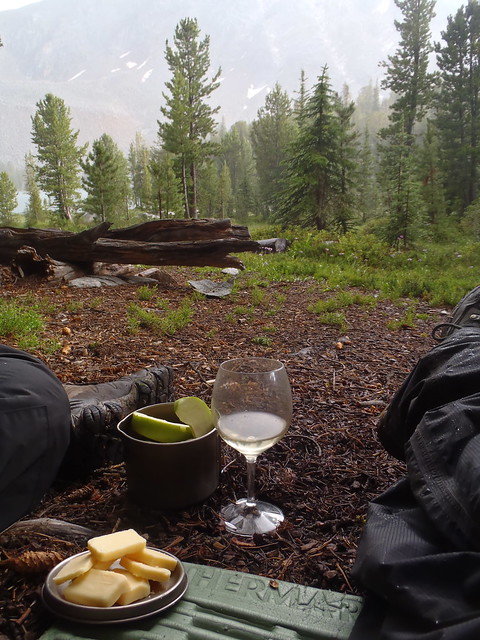
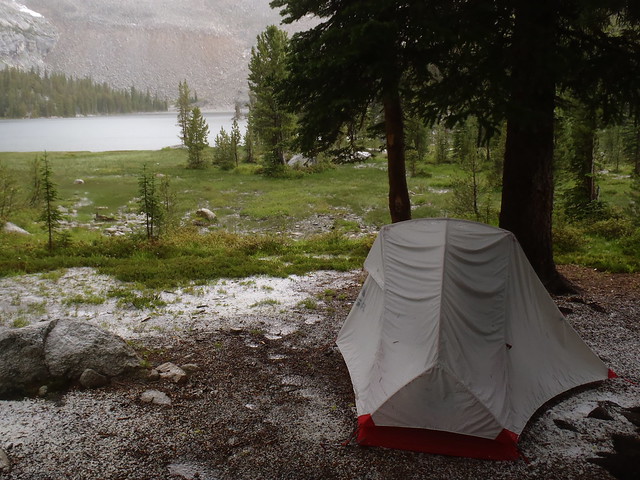
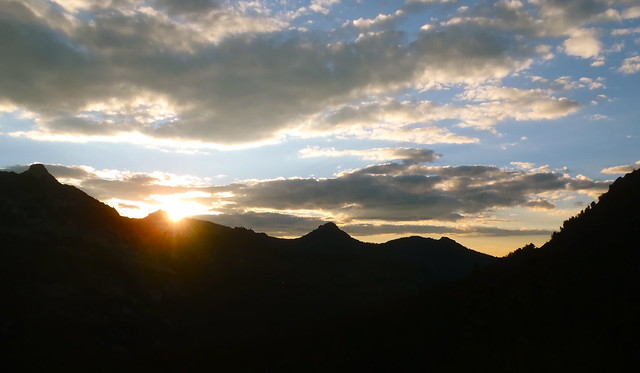
Once the storm drifted off to the east, we removed the tarp and enjoyed a dinner of pasta and tuna, then made a quick jaunt to a nearby knob that provided a great view of the brilliant sunset over the western ridges and peaks. One of our favorite parts of backpacking is stargazing, but our northern latitude meant that the stars wouldn’t really provide much of a display until almost midnight and would fade by 6 a.m. Weighing our options, we decided to call it an early night and set out alarms for the absurdly early time of 3 a.m. It seemed to make more sense than staying up late — by waking up early we could stargaze for a few hours, enjoy sunrise, explore around the lake some more, have lunch, then take a nap, with the left of the day left free to complete and utter leisure.
As planned, we awoke at 3 a.m. and headed to a flat rock which jutted into the lake that we had scoped out the night before. This minor peninsula served as our planetarium as we sipped coffee and ate oatmeal and coffee, wearing all our layers to ward off the pre-dawn chill. Any possible regrets about the early start were quickly erased as we laid back and gazed upward, entranced by the constellations and shooting stars. Stars reflected off the impossibly still surface of the 33-acre lake and the silence was profound. Steadily the stars disappeared and the landscape became illuminated a few degrees at a time.
None of the research I’d done on Torrey Lake and Torrey Mountain had indicated a route from the lake up to the peak, but Justin and I decided we would take the path of least resistance as far we could. Our hammocks at camp served as a good antidote to any summit fever we might catch. Easy Class 2 and Class 3 scrambling allowed us to gain perhaps a 1,000 feet of elevation and great views into the lake and the drainage we’d hiked up, as well as near and far peaks and mountain ranges. Shortly after this point the terrain shifted to comfortable Class 4 scrambling, but then quickly made the leap to “Class Certain Death”. Traversing unstable talus on a knife edge ridge with boulders making for blind corners and aretes to maneuver around and more than a thousand feet of air under our heels just didn’t look like fun. So, without the slightest pangs of regret, we headed back to camp and found ourselves in our hammocks with boots off and eyes shut by noon.
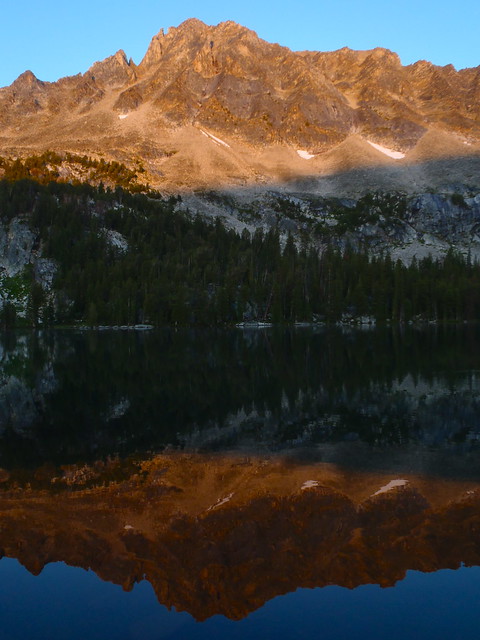
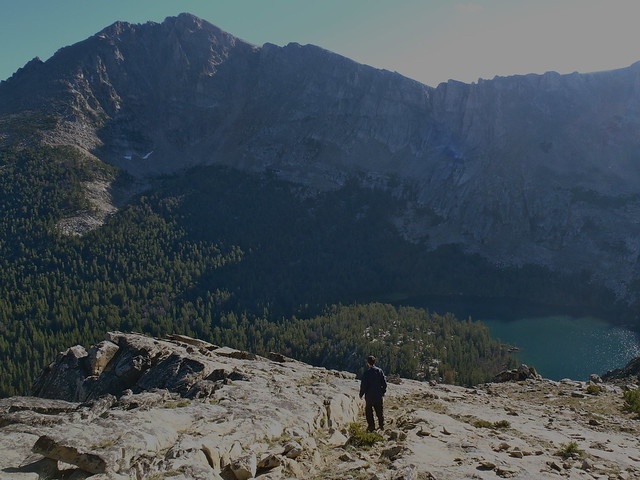
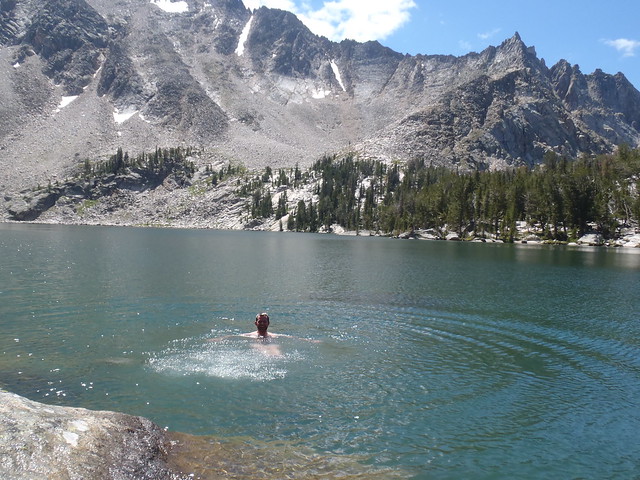
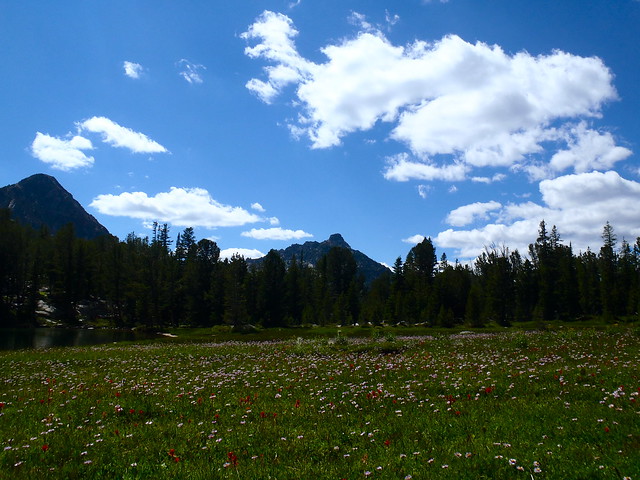
Not wishing to have an afternoon devoid of any excitement, I convinced Justin to venture over to a lakeside boulder with me for a dip in the lake. After prepping some green tea, we made the frigid plunge. The feeling of refreshment one gets from jumping in a cold mountain lake is pure and beyond description or comparison. We dried off and basked in the sun, enjoying the warming tea and listening to a well-curated playlist (Pavement, Grateful Dead, Dusty Springfield, Will Oldham, Velvet Underground, to name a few) was an absolutely sublime way to spend the afternoon.
The wildflowers were at near-peak and so were the mosquitoes. In an attempt to outsmart the insects, we decided to dine at the same knob where we had watched the sunset the previous evening, hoping that its breezier locale would result in less thick swarms of the pesky creatures. We noticed no difference in the mosquito populations but at least we enjoyed an incredible view and another nice sunset during the meal. Our dining room certainly ranked among the Top Five of those on our backpacking trips and the mosquito activity ranked among the Top Two. Our headnets and DEET offered us some respite. Given our early rise that day, we headed to bed early as well; we were in out tents by 9:30 p.m..
It was another early start the next morning, as we found ourselves up around 6 a.m.. We enjoyed coffee and snacks, packing at a leisurely pace. We left the towering cliffs and shimmering waters in the proverbial rear-view mirror by 9 a.m.. The hike out was as pleasant as any activity which takes you away from one of Nature’s beautiful little corners can be and we trod toward the trailhead with no particular hurry.
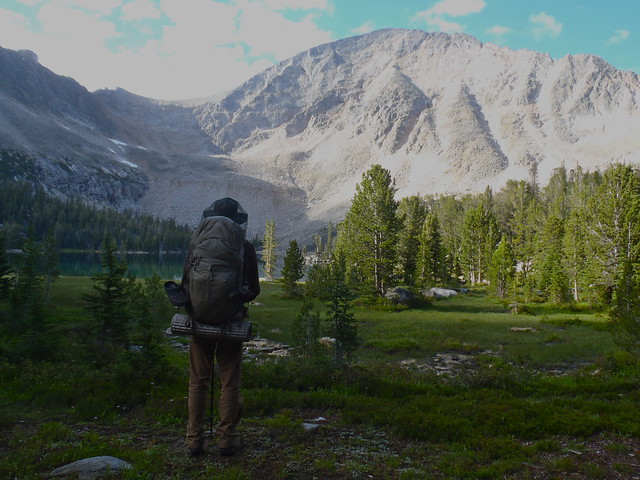
We arrived at the trailhead early in the afternoon and stretched for several minutes before treating ourselves to a change of clothes after splashing off with some water stored in the car. Our ride back featured an ideal pit stop — a soak at Elkhorn Hot Springs followed by a meal at the lodge. If there’s a better way to wind down a backpacking trip than a soak in a hot springs followed by a delicious meal, please let me know.
